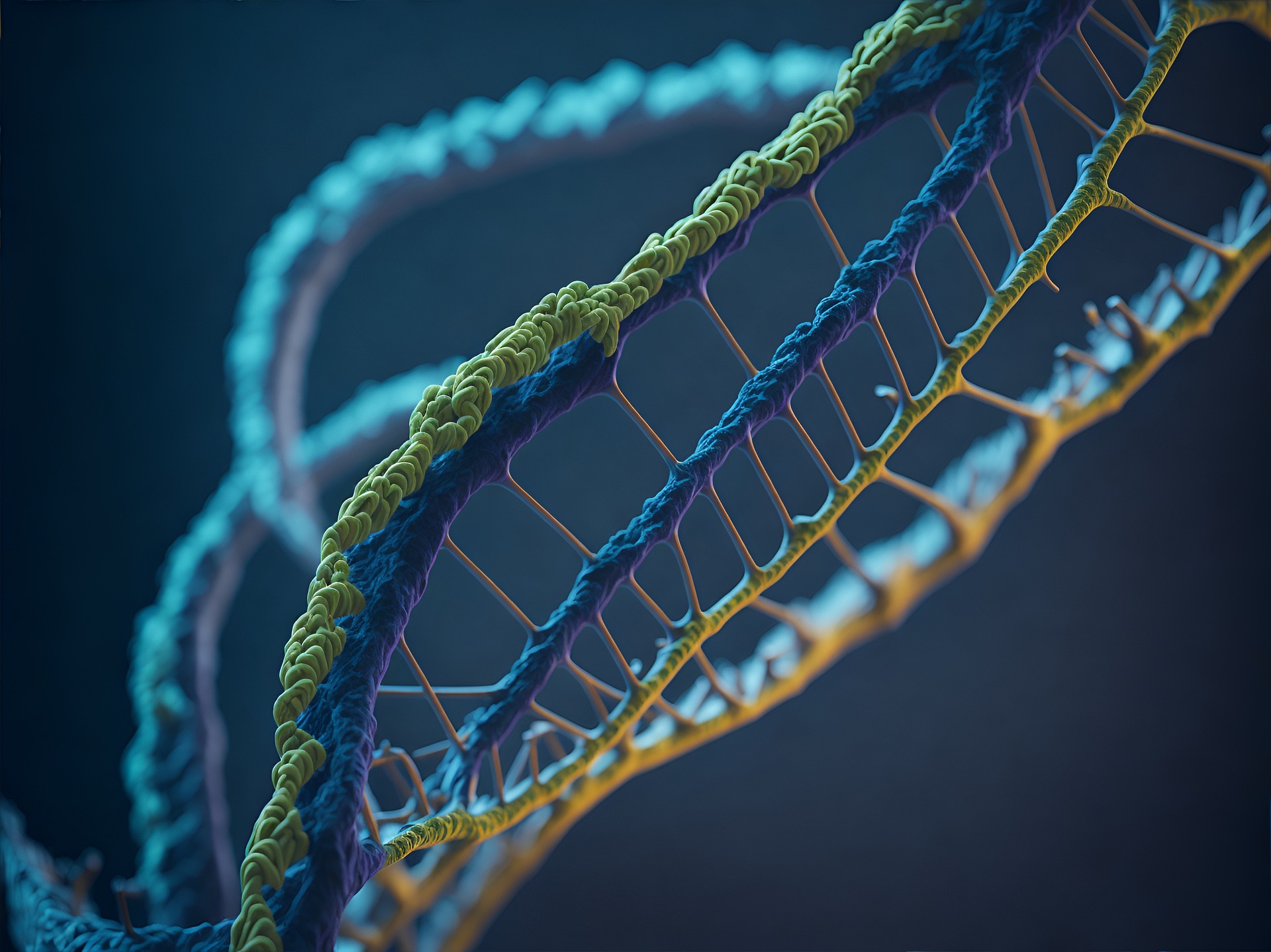Human genetics is a fascinating field that explores the fundamental building blocks of life. Among these building blocks, chromosomes play a crucial role. Chromosomes are structures within cells that contain DNA, the molecule that carries genetic information. Understanding the number of chromosomes in humans and their function is essential for grasping the basics of human biology and genetics. This comprehensive guide will delve into the number of chromosomes humans have, their structure and function, the role they play in heredity and genetic disorders, and much more.
The Basics of Chromosomes
What are Chromosomes?
Chromosomes are long, thread-like structures made of DNA and proteins. They are found in the nucleus of most living cells and carry genetic information in the form of genes. Each chromosome is composed of DNA tightly coiled many times around proteins called histones that support its structure.
Structure of Chromosomes
A chromosome consists of two identical halves called chromatids, joined together at a region called the centromere. The chromatids contain tightly coiled DNA, which is organized into genes. These genes contain the instructions for making proteins, which perform a vast array of functions in the body.
Function of Chromosomes
Chromosomes ensure that DNA is accurately copied and distributed in the vast majority of cell divisions. They play a crucial role in cell division processes such as mitosis and meiosis, ensuring that each new cell receives the correct number of chromosomes and therefore the right amount of genetic information.
The Number of Chromosomes in Humans
Human Chromosome Count
Humans have a total of 46 chromosomes in each cell, organized into 23 pairs. These include 22 pairs of autosomes and one pair of sex chromosomes. Each parent contributes one chromosome to each pair, so a child inherits half of their chromosomes from each parent.
Autosomes and Sex Chromosomes
- Autosomes: The 22 pairs of autosomes are numbered 1 through 22, according to their size, with chromosome 1 being the largest. These chromosomes carry genes responsible for various bodily functions and characteristics.
- Sex Chromosomes: The 23rd pair of chromosomes determines an individual’s sex. Females have two X chromosomes (XX), while males have one X and one Y chromosome (XY). The presence of the Y chromosome determines male sex characteristics.
Karyotype
A karyotype is an image of an individual’s chromosomes, arranged and numbered by size from largest to smallest. It is used in genetics to look for abnormal numbers or structures of chromosomes.
The Role of Chromosomes in Heredity
Genetic Inheritance
Genes located on chromosomes are passed from parents to offspring through the process of reproduction. Each parent contributes one set of chromosomes to their offspring, ensuring that children inherit a mix of genetic material from both parents. This inheritance pattern determines many aspects of an individual’s physical appearance, behavior, and susceptibility to certain diseases.
Mendelian Inheritance
Named after Gregor Mendel, the father of genetics, Mendelian inheritance refers to the patterns of inheritance for traits controlled by a single gene with different alleles. Traits governed by Mendelian inheritance follow specific ratios and patterns, such as dominant and recessive inheritance.
Non-Mendelian Inheritance
Not all traits follow Mendelian inheritance patterns. Non-Mendelian inheritance includes incomplete dominance, codominance, and polygenic inheritance, where multiple genes contribute to a single trait. These patterns are more complex and do not follow the simple dominant-recessive model.
Chromosomal Disorders
Aneuploidy
Aneuploidy refers to the presence of an abnormal number of chromosomes in a cell. This can result in genetic disorders due to the imbalance of gene dosage.
- Down Syndrome: Also known as trisomy 21, Down syndrome is caused by an extra copy of chromosome 21. It leads to developmental and intellectual delays, as well as characteristic facial features.
- Turner Syndrome: Turner syndrome occurs when a female has only one X chromosome (45,X). It can cause short stature, infertility, and certain physical abnormalities.
- Klinefelter Syndrome: This condition affects males who have an extra X chromosome (47,XXY). It can result in reduced testosterone levels, delayed puberty, and infertility.
Structural Chromosome Abnormalities
Structural abnormalities occur when the structure of one or more chromosomes is altered. These changes can involve deletions, duplications, inversions, or translocations of chromosome segments.
- Cri du Chat Syndrome: Caused by a deletion on chromosome 5, this syndrome is characterized by intellectual disability and a high-pitched cry that sounds like a cat.
- Williams Syndrome: Resulting from a deletion on chromosome 7, Williams syndrome leads to developmental delays, cardiovascular issues, and a distinctive facial appearance.
Chromosomal Mosaicism
Mosaicism occurs when an individual has two or more populations of cells with different genetic makeups. This can result from a mutation occurring in one cell during early development, which is then passed on to some but not all daughter cells.
Techniques for Studying Chromosomes
Karyotyping
Karyotyping is the process of pairing and ordering all the chromosomes of an organism, providing a genome-wide snapshot of an individual’s chromosomes. This technique is used to identify chromosomal abnormalities and to diagnose genetic diseases.
Fluorescence In Situ Hybridization (FISH)
FISH is a molecular cytogenetic technique that uses fluorescent probes to bind to specific chromosome regions. This method allows for the detection of genetic abnormalities, such as deletions, duplications, and translocations, with high resolution.
Comparative Genomic Hybridization (CGH)
CGH is a technique that compares the genomic content of a test sample with a reference sample. It can detect gains and losses of chromosome segments throughout the genome, providing a detailed map of chromosomal changes.
Next-Generation Sequencing (NGS)
NGS allows for the sequencing of entire genomes or targeted regions with high throughput and accuracy. This technology provides detailed information about genetic variations, including single nucleotide polymorphisms (SNPs), insertions, deletions, and structural variations.
Advances in Chromosome Research
Human Genome Project
The Human Genome Project (HGP) was an international research effort to sequence and map all the genes in the human genome. Completed in 2003, the HGP has provided invaluable insights into human genetics and has paved the way for advances in medical research and personalized medicine.
CRISPR-Cas9
CRISPR-Cas9 is a revolutionary genome-editing technology that allows for precise modifications of DNA sequences. This tool has the potential to correct genetic mutations, study gene function, and develop new therapies for genetic disorders.
Epigenetics
Epigenetics is the study of heritable changes in gene expression that do not involve changes to the underlying DNA sequence. Epigenetic modifications, such as DNA methylation and histone modification, play a crucial role in regulating gene activity and can be influenced by environmental factors.
Ethical Considerations in Genetic Research
Genetic Privacy
With advances in genetic testing and research, concerns about genetic privacy have emerged. Individuals may be at risk of having their genetic information used without their consent or for purposes they did not intend, such as discrimination by employers or insurers.
Informed Consent
Informed consent is a fundamental ethical principle in genetic research. Participants must be fully informed about the nature of the research, the potential risks and benefits, and their rights, including the right to withdraw from the study at any time.
Genetic Counseling
Genetic counseling provides individuals and families with information about genetic conditions, inheritance patterns, and the implications of genetic testing. It helps individuals make informed decisions about their health and reproductive choices.
Future Directions in Chromosome and Genetic Research
Personalized Medicine
Personalized medicine aims to tailor medical treatment to an individual’s genetic makeup. By understanding the genetic basis of diseases and individual responses to treatments, healthcare providers can develop more effective and targeted therapies.
Gene Therapy
Gene therapy involves the introduction, removal, or alteration of genetic material within a patient’s cells to treat or prevent disease. Advances in gene-editing technologies, such as CRISPR-Cas9, hold great promise for the development of new gene therapies.
Genomic Data Sharing
The sharing of genomic data among researchers can accelerate scientific discoveries and improve our understanding of genetic diseases. However, it also raises important questions about data privacy and the ethical use of genetic information.
FAQs About Chromosomes in Humans
How many chromosomes do humans have?
Humans have 46 chromosomes in each cell, arranged in 23 pairs. This includes 22 pairs of autosomes and one pair of sex chromosomes.
What are autosomes?
Autosomes are the 22 pairs of chromosomes that are not involved in determining sex. They carry genes responsible for various bodily functions and characteristics.
What are sex chromosomes?
Sex chromosomes are the 23rd pair of chromosomes that determine an individual’s sex. Females have two X chromosomes (XX), while males have one X and one Y chromosome (XY).
How is the number of chromosomes determined in humans?
Each parent contributes one chromosome to each pair, so a child inherits 23 chromosomes from the mother and 23 from the father, totaling 46 chromosomes.
What is a karyotype?
A karyotype is an image of an individual’s chromosomes arranged and numbered by size from largest to smallest. It is used to identify chromosomal abnormalities and diagnose genetic diseases.
What is the role of chromosomes in heredity?
Chromosomes carry genes that are passed from parents to offspring through reproduction. These genes determine many aspects of an individual’s physical appearance, behavior, and susceptibility to certain diseases.
What is aneuploidy?
Aneuploidy is the presence of an abnormal number of chromosomes in a cell. It can lead to genetic disorders due to the imbalance of gene dosage.
What is Down syndrome?
Down syndrome, also known as trisomy 21, is caused by an extra copy of chromosome 21. It leads to developmental and intellectual delays, as well as characteristic facial features.
What is Turner syndrome?
Turner syndrome occurs when a female has only one X chromosome (45,X). It can cause short stature, infertility, and certain physical abnormalities.
What is Klinefelter syndrome?
Klinefelter syndrome affects males who have an extra X chromosome (47,XXY). It can result in reduced testosterone levels, delayed puberty, and infertility.
What are structural chromosome abnormalities?
Structural abnormalities involve changes to the structure of one or more chromosomes, such as deletions, duplications, inversions, or translocations of chromosome segments.
What is Cri du Chat syndrome?
Cri du Chat syndrome is caused by a deletion on chromosome 5 and is characterized by intellectual disability and a high-pitched cry that sounds like a cat.
What is Williams syndrome?
Williams syndrome results from a deletion on chromosome 7, leading to developmental delays, cardiovascular issues, and a distinctive facial appearance.
What is chromosomal mosaicism?
Mosaicism occurs when an individual has two or more populations of cells with different genetic makeups. This can result from a mutation occurring in one cell during early development, which is then passed on to some but not all daughter cells.
What is karyotyping used for?
Karyotyping is used to pair and order all the chromosomes of an organism, providing a genome-wide snapshot. It helps identify chromosomal abnormalities and diagnose genetic diseases.
What is Fluorescence In Situ Hybridization (FISH)?
FISH is a molecular cytogenetic technique that uses fluorescent probes to bind to specific chromosome regions. It allows for the detection of genetic abnormalities with high resolution.
What is Comparative Genomic Hybridization (CGH)?
CGH compares the genomic content of a test sample with a reference sample, detecting gains and losses of chromosome segments throughout the genome.
What is Next-Generation Sequencing (NGS)?
NGS allows for the sequencing of entire genomes or targeted regions with high throughput and accuracy, providing detailed information about genetic variations.
What was the Human Genome Project?
The Human Genome Project was an international research effort to sequence and map all the genes in the human genome, completed in 2003. It has provided invaluable insights into human genetics.
What is CRISPR-Cas9?
CRISPR-Cas9 is a genome-editing technology that allows for precise modifications of DNA sequences. It holds great promise for correcting genetic mutations and developing new therapies.
What is epigenetics?
Epigenetics is the study of heritable changes in gene expression that do not involve changes to the underlying DNA sequence, influenced by environmental factors.
What are ethical considerations in genetic research?
Ethical considerations include genetic privacy, informed consent, and genetic counseling, ensuring the responsible use of genetic information and protecting participants’ rights.
What is personalized medicine?
Personalized medicine tailors medical treatment to an individual’s genetic makeup, developing more effective and targeted therapies based on genetic information.
What is gene therapy?
Gene therapy involves the introduction, removal, or alteration of genetic material within a patient’s cells to treat or prevent disease, using technologies like CRISPR-Cas9.
What is genomic data sharing?
Genomic data sharing involves the exchange of genetic information among researchers to accelerate scientific discoveries, raising important questions about data privacy.
What is the function of the centromere?
The centromere is the region of a chromosome where the two chromatids are joined together, playing a crucial role in chromosome segregation during cell division.
How are chromosomes involved in cell division?
During cell division, chromosomes ensure that DNA is accurately copied and distributed to daughter cells through processes like mitosis and meiosis.
What are histones?
Histones are proteins around which DNA is tightly coiled, helping to support the structure of chromosomes and regulate gene expression.
What is the significance of the Y chromosome?
The Y chromosome determines male sex characteristics and carries genes important for male development and reproduction.
Can chromosomal abnormalities be inherited?
Some chromosomal abnormalities can be inherited, while others occur as new mutations during the formation of reproductive cells or early development.
What is a chromosomal translocation?
A chromosomal translocation occurs when a segment of one chromosome is transferred to another chromosome, which can disrupt genes and lead to genetic disorders.
How do environmental factors influence epigenetics?
Environmental factors such as diet, stress, and exposure to toxins can influence epigenetic modifications, affecting gene expression without changing the DNA sequence.
What is the role of genetic counseling?
Genetic counseling provides individuals and families with information about genetic conditions, inheritance patterns, and the implications of genetic testing, helping them make informed decisions.
What are single nucleotide polymorphisms (SNPs)?
SNPs are variations in a single nucleotide in the DNA sequence, which can affect gene function and contribute to genetic diversity and susceptibility to diseases.
What are the implications of genetic testing?
Genetic testing can provide valuable information about an individual’s risk for certain genetic conditions, guide medical management, and inform reproductive decisions.
What is the role of chromosomes in cancer?
Chromosomal abnormalities, such as mutations, deletions, and translocations, can lead to the development and progression of cancer by disrupting normal gene function.
How do researchers study the function of specific genes?
Researchers study gene function using techniques such as gene knockout, RNA interference, and CRISPR-Cas9 to investigate the effects of altering specific genes.
What are the potential benefits of gene-editing technologies?
Gene-editing technologies hold the potential to correct genetic mutations, study gene function, develop new therapies for genetic disorders, and improve agricultural practices.
What is the future of genetic research?
The future of genetic research includes advances in personalized medicine, gene therapy, genomic data sharing, and understanding the complex interactions between genetics and the environment.
What is the difference between mitosis and meiosis?
Mitosis is the process of cell division that results in two genetically identical daughter cells, each with the same number of chromosomes as the parent cell. Meiosis, on the other hand, is a specialized form of cell division that produces gametes (sperm and egg cells), each with half the number of chromosomes, enabling sexual reproduction.
What is a gene?
A gene is a segment of DNA located on a chromosome that contains the instructions for making a specific protein or set of proteins. Genes are the basic units of heredity and influence various traits and functions in an organism.
What is a genome?
A genome is the complete set of genetic material in an organism, including all of its genes and non-coding sequences of DNA. In humans, the genome consists of approximately 3 billion DNA base pairs organized into 23 pairs of chromosomes.
How are chromosomes visualized in a laboratory?
Chromosomes are visualized using techniques such as karyotyping, where cells are arrested in metaphase of cell division, stained, and photographed under a microscope. Fluorescence in situ hybridization (FISH) and other advanced imaging techniques can also be used for more detailed visualization.
What is genetic recombination?
Genetic recombination is the process by which genetic material is exchanged between homologous chromosomes during meiosis. This process increases genetic diversity by creating new combinations of alleles in the resulting gametes.
What is a mutation?
A mutation is a change in the DNA sequence of a gene. Mutations can occur spontaneously or as a result of environmental factors and can lead to changes in the structure and function of proteins, potentially causing genetic disorders or contributing to evolution.
How do chromosomal abnormalities lead to disease?
Chromosomal abnormalities, such as aneuploidy, deletions, duplications, and translocations, can disrupt the normal function of genes and result in a variety of genetic disorders. These abnormalities can affect development, physical characteristics, and overall health.
What is the role of telomeres?
Telomeres are repetitive DNA sequences at the ends of chromosomes that protect them from degradation and prevent the loss of genetic information during cell division. Telomere length decreases with each cell division, which is associated with aging and cellular senescence.
How are sex chromosomes inherited?
Sex chromosomes are inherited from both parents. Females inherit one X chromosome from each parent (XX), while males inherit an X chromosome from their mother and a Y chromosome from their father (XY). This inheritance pattern determines an individual’s sex.
What is nondisjunction?
Nondisjunction is an error in cell division that occurs when chromosomes fail to separate properly during meiosis or mitosis. This can result in cells with an abnormal number of chromosomes, leading to conditions such as Down syndrome, Turner syndrome, and Klinefelter syndrome.
What are epigenetic modifications?
Epigenetic modifications are changes to the structure of chromatin that affect gene expression without altering the underlying DNA sequence. These modifications include DNA methylation, histone modification, and RNA-associated silencing, and can be influenced by environmental factors.
What is genetic imprinting?
Genetic imprinting is an epigenetic phenomenon where certain genes are expressed in a parent-of-origin-specific manner. Imprinted genes are marked with epigenetic tags that result in the expression of only one allele (either maternal or paternal) while the other allele is silenced.
How do environmental factors influence gene expression?
Environmental factors, such as diet, stress, exposure to toxins, and physical activity, can influence gene expression through epigenetic mechanisms. These factors can modify the structure of chromatin and alter the activity of genes, affecting an individual’s phenotype.
What is a gene knockout?
A gene knockout is a genetic technique used to inactivate a specific gene in an organism to study its function. By disrupting the gene, researchers can observe the resulting changes in the organism’s phenotype and gain insights into the gene’s role.
What are chromosomal translocations and their effects?
Chromosomal translocations occur when segments of chromosomes break off and attach to other chromosomes. This can disrupt gene function and regulation, potentially leading to genetic disorders and cancers, such as chronic myeloid leukemia (CML).
How does genetic diversity benefit a population?
Genetic diversity increases a population’s ability to adapt to changing environments and resist diseases. It provides a broader range of genetic traits, enhancing survival and reproduction in varying conditions.
What is the significance of the X-inactivation process?
X-inactivation is a process in females where one of the two X chromosomes is randomly inactivated in each cell to balance the dosage of X-linked genes between males and females. This ensures that females do not have twice the amount of X-linked gene products as males.
What is a chromosomal inversion?
A chromosomal inversion occurs when a segment of a chromosome breaks off, flips around, and reattaches in the reverse orientation. While inversions do not typically result in a loss of genetic material, they can disrupt gene function and lead to genetic disorders.
How do polygenic traits differ from Mendelian traits?
Polygenic traits are influenced by multiple genes and often show a continuous range of variation, such as height and skin color. Mendelian traits are determined by a single gene with clear dominant and recessive alleles, following specific inheritance patterns.
What are the potential benefits and risks of gene editing in humans?
Gene editing has the potential to correct genetic disorders, improve disease resistance, and enhance certain traits. However, it also poses risks, including off-target effects, ethical concerns, and unintended consequences that could affect future generations.
Conclusion
Understanding the number of chromosomes humans have and their function is fundamental to the study of human genetics. Humans have 46 chromosomes in each cell, organized into 23 pairs, including 22 pairs of autosomes and one pair of sex chromosomes.
These chromosomes carry the genetic information that determines many aspects of our physical appearance, behavior, and susceptibility to certain diseases. Advances in genetic research, such as the Human Genome Project and CRISPR-Cas9, have provided invaluable insights into the role of chromosomes and opened up new possibilities for personalized medicine and gene therapy.
As we continue to explore the complexities of human genetics, ethical considerations and informed consent will remain critical to ensuring the responsible use of genetic information.



